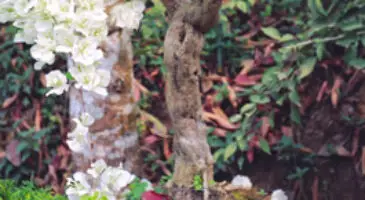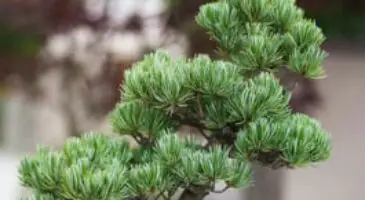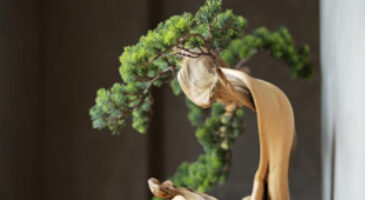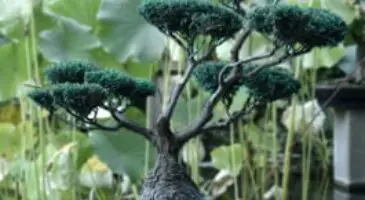Table of Contents
Bonsai is the earliest living art form that uses training and growing techniques to create miniature trees that showcase their larger counterparts.
It involves root pruning, heavy crown pruning, and pruning of roots in shallow boxes. But here, a question arises can any tree be made into a bonsai? I am going to talk about it in detail.
Can any tree be turned into a bonsai
Yeah, any tree species can be turned into a bonsai tree! Although some species perform better as bonsai. They are generally more challenging than others and necessitate certain soil types, and the roots grow hairy instead of spreading.
Most conventional bonsai trees include junipers, ficus, maples, and boxwood. However, there are a lot of common bonsai species.
What tree can you turn into bonsai tree
For bonsai, choose a tree with small leaves, a good branching form, plenty of nodes among the branches, attractive bark, and a place that can survive in a container by repeated pruning.
In addition, all tree elements should be in equal proportion with each other such as flowers, fruits, leaves, roots, and buds with the lower branches. Tap-rooted plants are a poor option. Except a bonsai is kept indoors all year round, select a tree that is resilient in your climate.
How to choose a tree for bonsai
Bonsai trees are planted in a terrarium or container and trained to create the desired look or effect.
There are numerous different types of indoor bonsai. Although many people select a bonsai tree depending on how tempting it is, choosing the suitable bonsai for your environment is imperative.
Size
One most essential thing that you have to consider when getting a bonsai tree is where you are going to plant it. It makes a difference because bonsai trees can come in several sizes, so you have to buy a species that grows to the right size for the place you are planting.
For instance, if you buy a small plant, including the Mame bonsai tree, which raises to 10 cm. In addition, if you are finding a bonsai to fill an ample space, a Chinese elm bonsai tree can look great.
Bonsai Master Expertise
As bonsai is available in an extensive range, some may be easier to plant as compared to others.
So if you are a starter and don’t have a great experience of planting bonsai, the Chinese juniper bonsai tree, the Dwarf Umbrella bonsai tree, and the fig bonsai tree are trendy.
They become accustomed to different climates and do not want such a harsh care system to survive. On the other hand, if you want more sophisticated bonsai trees, the thousand stars is a stunning tree to grow.
Check the Environment
Even though most bonsai trees need enough light and protection from frost, some require more particular conditions, and you should consider this when going for your bonsai tree.
However, there are some ordinary circumstances where bonsai trees can be planted and the best plants for these environments:
Chinese Elm bonsai: Get sunlight in the morning and evening
Jade bonsai tree: No frequent watering is required
Original tea bonsai tree: In a room that gets actually warm.
Fig bonsai tree: Well light place but out of direct light.
Jade bonsai tree, Chinese sweet plum bonsai tree: Place with enough bright light.
Choose a Healthy Plant
The key to growing a healthy tree is buying a healthy plant to start with. I have listed here some essential points that you should keep in mind when purchasing a plant.
Leaves: The leaves on the plant should be healthy and of bright green color. No leaves should be discolored or dried.
Branches: The plant should not have branches that cross and even divide through the entire shape of the tree.
Trunk: The trunk should be strong at the bottom than the top. However, the surface of the stem should be smooth.
Roots: Roots should be slightly loosened from the soil but should be safely anchored in the pot.
How to make a bonsai tree from a normal tree
The bonsai process seems challenging, but following the below-mentioned steps can help you make a bonsai from a typical plant.
The bonsai process seems challenging, but following the below-mentioned steps can help you make a bonsai from a typical plant.
Total Time: 3 hours
-
Select the plant
Bonsai can be developed with many different plants and trees. A lot of people have made bonsai out of tall trees and bushy shrubs. Flowers and fruit trees are also prevalent. So you can select the plant on which you want to apply the bonsai technique.
-
Decide it will be indoors or outdoors
Once the plant is selected, mainly a question arises whether it lives indoors or outdoors? Tropical plants are traditionally used to grow bonsai. But consider your local climate when choosing your plant.
If your plant necessitates warm temperatures and plenty of sunlight, you may have to bring it in when winter starts. You have to think about where it can stay in your home to get maximum light and be free from drafts.
-
Potting your bonsai tree
Potting the bonsai tree is a tricky step. If you are starting a bonsai yourself and are not buying pre-prepared from a nursery, you will need an excellent pot – it should be small and shallow. It ensures that the roots of the tree do not extend too much. And definitely, you don’t want your bonsai tree to be too large.
A clay pot or container is a great choice to plant a bonsai tree. You will also have to add a good soil mixture, mainly for bonsai. You can order it or make it yourself.
If you prefer the home version, you can utilize a combination of potting soil with perlite, pine bark, peat moss, and sand. Mixing any of these ingredients with potted soil provides your proper bonsai drainage, which needs to stay dry and healthy.
-
Styling your tree
When it comes to styling or looking at the bonsai plant, you can pick an extensive range of different styles. It is essential to empathize with the plant you have chosen. Once you’ve decided on a priority, it’s time to prune and create.
-
Wiring your bonsai tree
If you are not glad about how some of your bonsai branches are growing, you can apply a technique referred to as wiring. Numerous bonsai masters state that it helps to develop a particular way for branches in training.
For this procedure, you will have a standard gardening wire. You just have to be more discriminating and envelop tightly. It will tend the branch to move every few weeks. Then, when your bonsai is in shape, you can eliminate the wiring.
Best tree to bonsai for a beginner
Newcomers to bonsai often have a question what is the best bonsai for beginners? It depends on water and location. But certain species of trees are definitely more accessible than others.
Chinese Elm
Chinese elm is a semi-evergreen tree. Typically most people choose bonsai trees and a good choice. It can be planted indoors and outdoors, but it is best to plant them outdoors.
Ficus
It is an evergreen tropical tree and sometimes has cool lofty roots that emerge from the trunk. The ficus plant can grow well on a bright spot, indoors.
As initially, most people want to grow bonsai trees indoors, so ficus is a perfect selection. The wire assists you to better shape your bonsai tree, as the branches are soft and easy to bend.
Juniper
Junipers are the best bonsai plants with scale-like foliage. It is old specimens from Japan that can be exceptionally valuable. They need to grow outside and can’t live indoors. It doesn’t have the leaves as you think.
Junipers raise in small cells – tiny pieces of green. It means you don’t need to worry about the big leaves tarnishing the image of the tree.
Cotoneaster
Cotoneaster is an evergreen plant with small leaves, flowers, and barriers. While small leaves are always helpful. It also reacts well to pruning. When you cut the branches back, it removes a lot of new branches.
What is the easiest bonsai tree to take care of
The ficus bonsai is suggested for starters who are new to bonsai and don’t have time to give them water regularly. As ficus is so flexible to underwatering, that’s why it is ideal for those who are looking for a low-maintenance tree.
Trimming the bonsai is easy as cutting the flipside leaves. Because ficus bonsai carry back buds so easily, they can be sifted anywhere and anytime. New leaves will sprout from the branches close to the cut.
Moreover, ficus bonsai trees can also be grown indoors. This is the primary reason; they are an excellent candidate for a tree positioned on the office, kitchen counter, or any other interior layout.
Conclusion:
So, in the end, I conclude that any plant can be turned into a bonsai tree. But some of them are harder to grow, while others are easily planted. I have shared a list of the best plants for apply the bonsai technique. You can choose any, according to your space.



